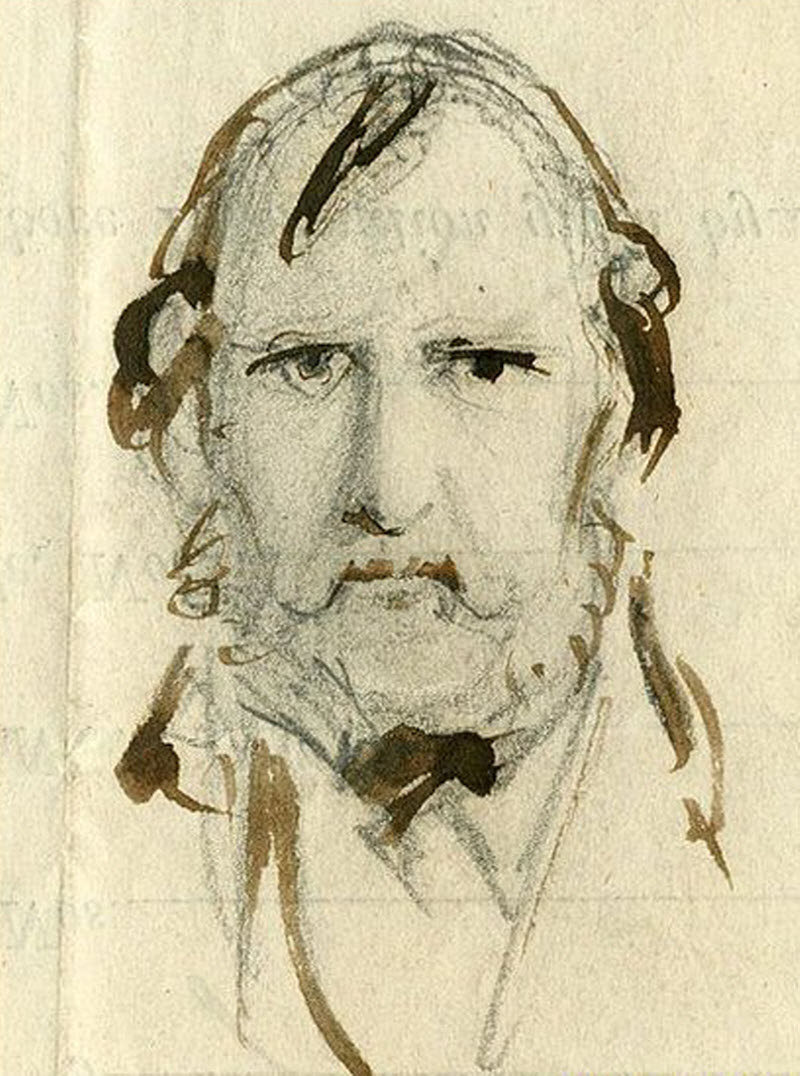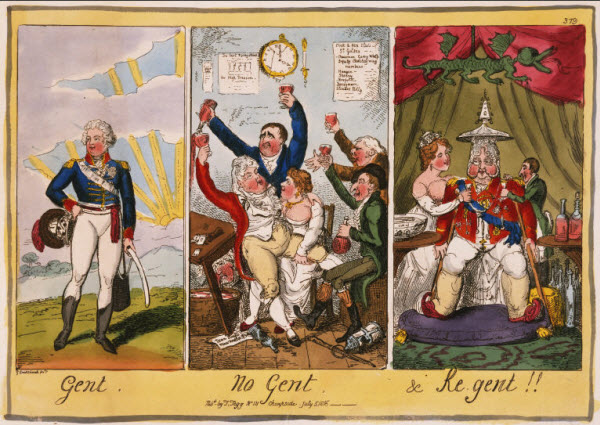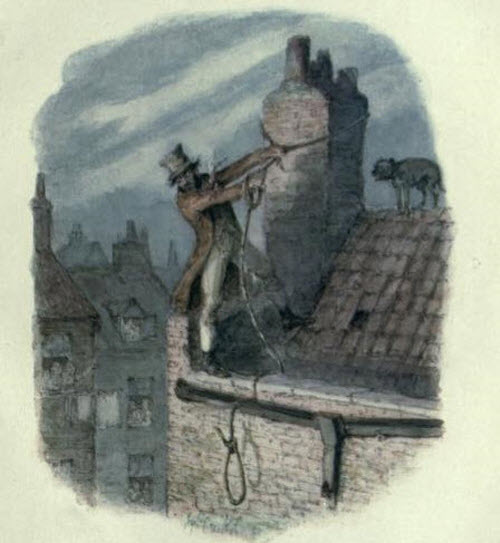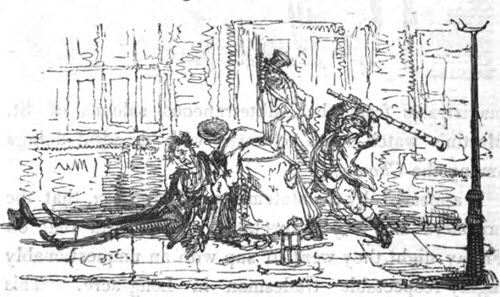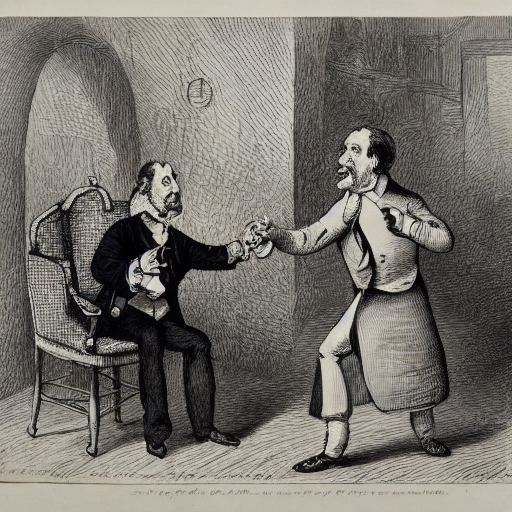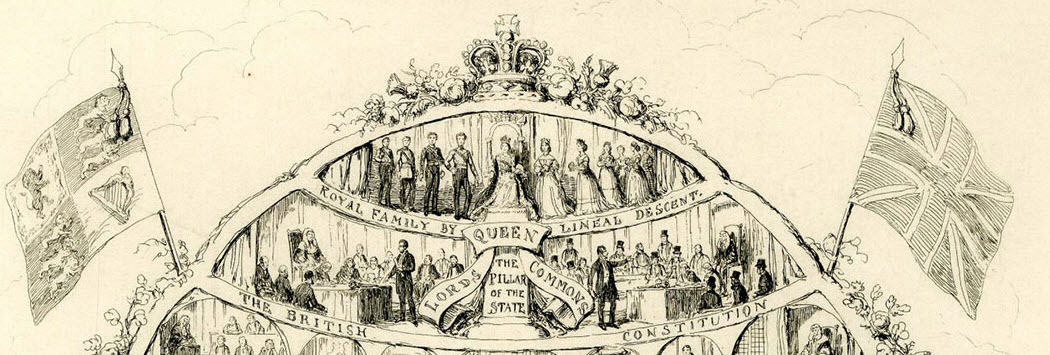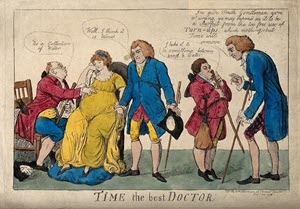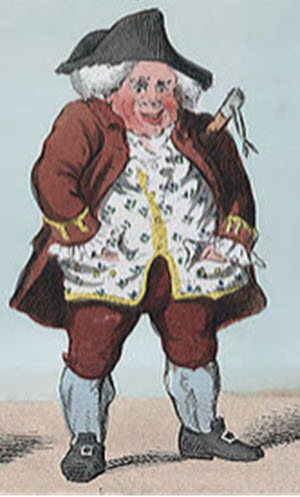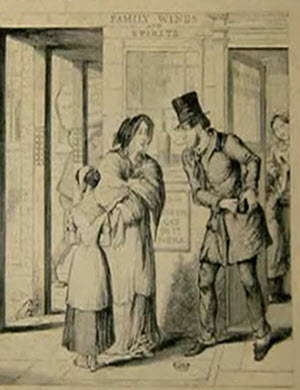Home | Articles | The British Beehive | bobolink
George Cruikshank was a prolific caricaturist and book illustrator, creating over 10,000 works over the course of his long career. His skill as a caricaturist and book illustrator led Cruikshank to develop a style of illustration that can be seen as a precursor of the graphic novel.
As a book illustrator, Cruikshank contributed drawings that depicted scenes from the book. These were not graphic novels, because there was more text than graphics. However, his technique of illustrating the text laid the groundwork for future graphic novels. His drawings were vivid action scenes depicting the novel's characters in movement and action, much like today's graphic novels. Cruikshank's illustrations were able to capture the essence of a scene in a way that few others could, and his style became a cornerstone of the medium.
Similarly, his talent as a caricaturist created vivid scenes that depicted the true essence of the character and their personality without many words. When Cruikshank did use words in his illustrations, it was through the innovative use of speech bubbles and captions. These served as mini-dialogues that augmented the image. Rather than the image augmenting the text, the text in Cruikshank's caricature drawings became secondary and was used to clarify the meaning of the drawing or make a point. This is similar to how contemporary graphic novels use sparse dialogue or narrative text to complement the graphics, which are the main medium telling the story.
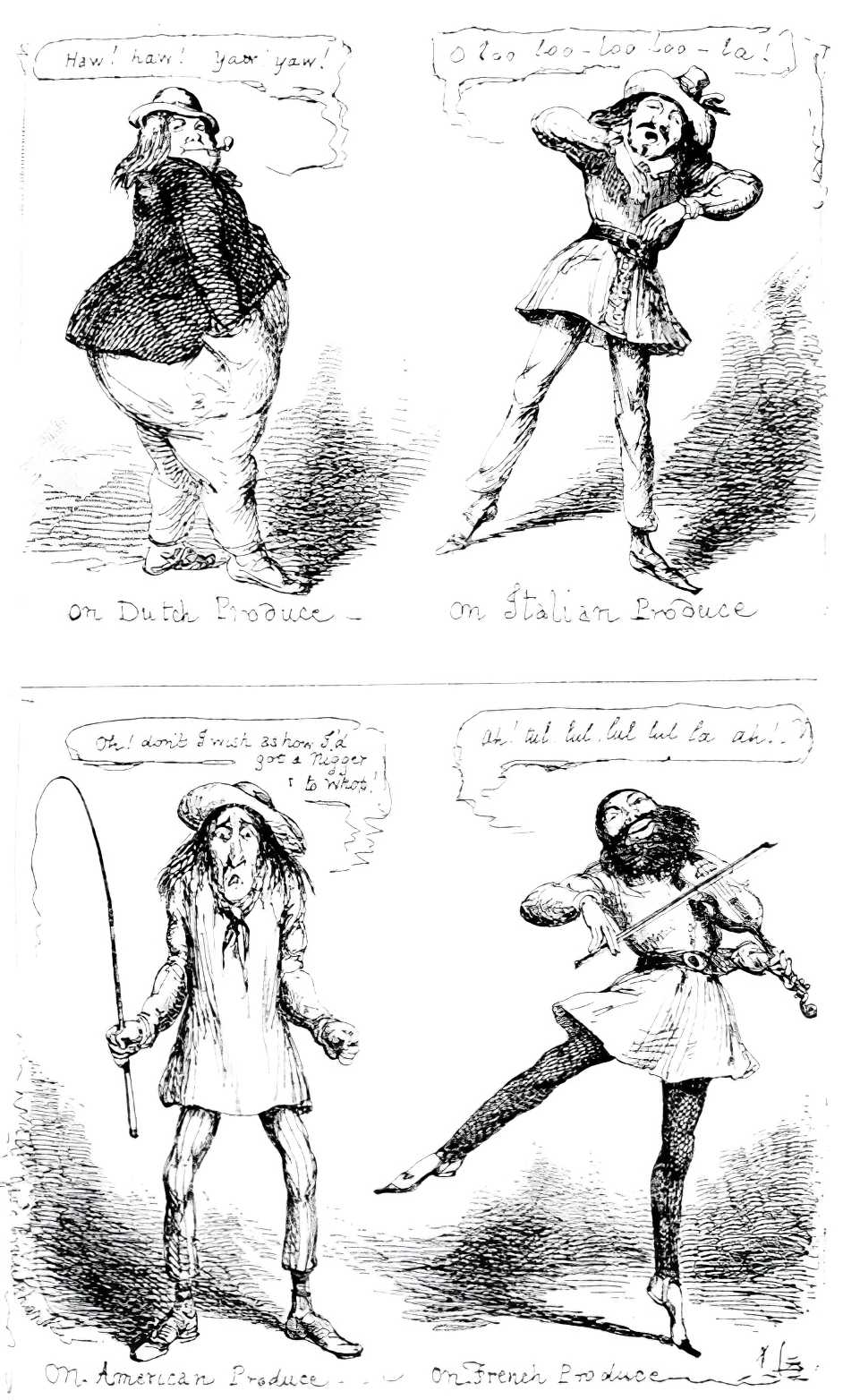
In this vignette from his 1848 Comic Almanack, advocating for British trade protectionism and against depending on foreign imports, Cruikshank makes use of caricature and speech bubbles to tell a story, namely the economic downfall of England.
George Cruikshank's impact on the development of graphic novels is evident in several of his works. One of his most notable works, "The Bottle," is an early example of a graphic novel. Published in 1847, it is a wordless book that tells the story of a family's descent into alcoholism and the devastating effects it has on their lives. The book is structured as a series of scenes, each one building on the last, to create a narrative that is both powerful and emotionally impactful. Cruikshank's use of visuals to tell a story without words set the stage for future graphic novels.
Another notable work of Cruikshank's that could be considered a graphic novel is his series of collections of caricatures and satirical drawings, such as "The Comic Almanack." these works contained sections that told stories, often derisive of the rich and powerful, using only images or a few speech bubbles to convey the meaning of the graphics.
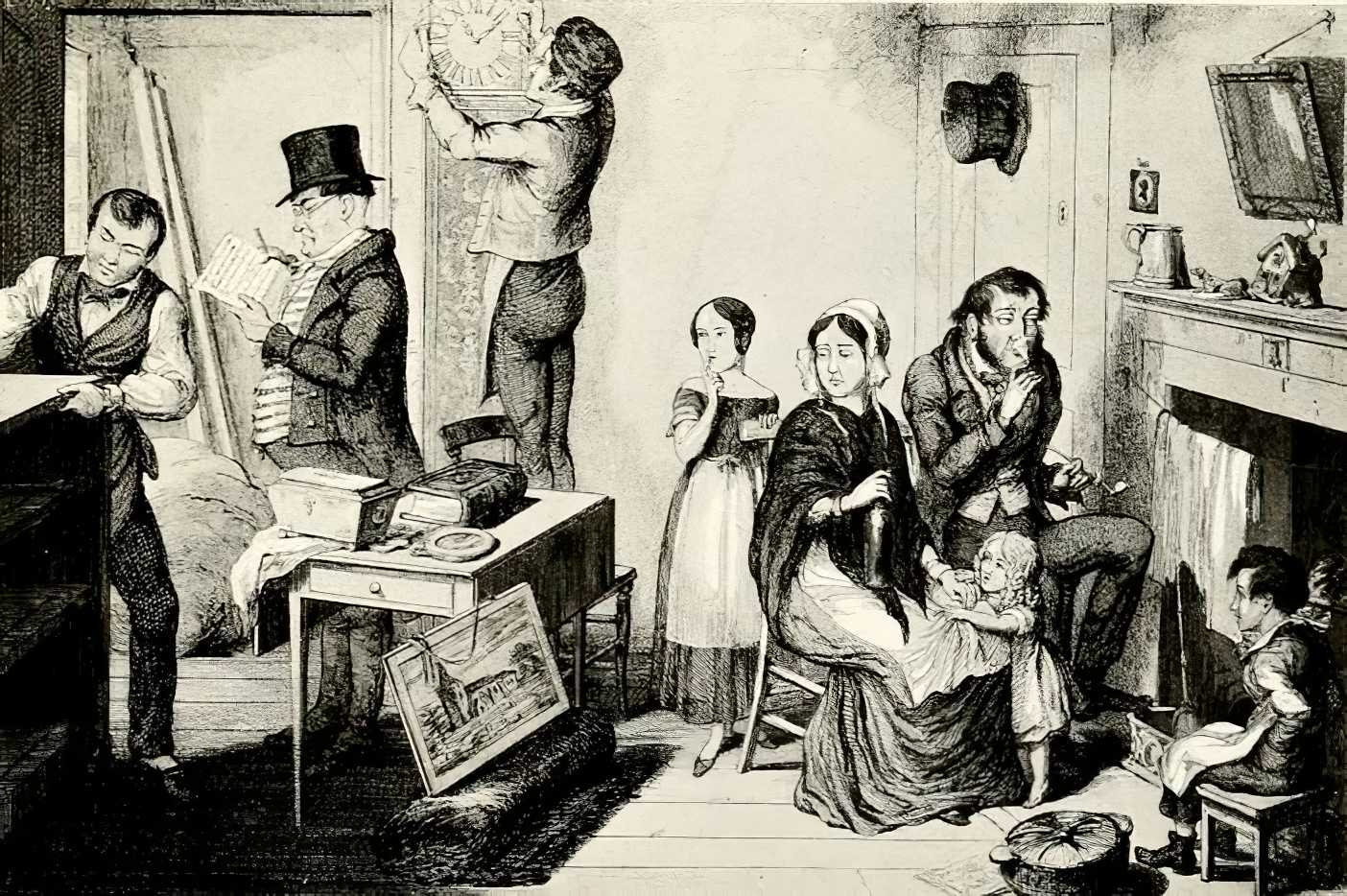
In this scene from The Bottle, the creditors are taking all of the family's furniture because the father has wasted the family's finances on drink.
In addition to these light hearted works, Cruikshank used the same techniques to depict in poignant detail the immorality and cruelty of the slave trade, which he vehemently opposed. The horrors of the slave ships and the suffering of the prisoners were made apparent for all to see, with just a few lines of ink. These works used humor and satire to draw attention to the issue of slavery and to advocate for its abolition. Cruikshank's caricatures and illustrations were used to convey important messages about social justice and human rights, and were a powerful tool in the fight against slavery.
In both "The Bottle" and his abolitionist tracts, Cruikshank used a combination of visuals and text to tell a story that was both engaging and socially relevant. These works demonstrate his ability to use art to convey complex ideas and emotions, and his influence on the development of graphic novels as a medium is clear. His legacy lives on in the works of contemporary graphic novelists who continue to use his techniques and styles to create powerful narratives that resonate with readers today.
Through both his technique (caricature, exaggerated expressions, action scenes and speech bubbles) as well as his subject matter, Cruikshank was a pioneer of the graphic novel genre. Though the style he pioneered did not acquire the name of graphic novel until much later, his legacy is felt deeply in modern graphic novels. His style and techniques have been adapted and evolved to fit the contemporary medium. His use of social commentary and symbolism continues to inspire graphic novelists today. As a pioneer of the genre, his influence cannot be overstated. He created a style of illustration that was able to tell a story in a way that had never been done before, and his influence continues to shape the medium today.
One example of a contemporary graphic novel that draws heavily on Cruikshank's legacy is "V for Vendetta" by Alan Moore and David Lloyd. The book features political commentary and a protagonist who wears a mask similar to that of Guy Fawkes, a historical figure often satirized by Cruikshank. The book also incorporates symbolic elements and features exaggerated, caricature-like depictions of its characters. The influence of Cruikshank's art is clear in the way that the book tells its story, with the graphics taking the lead and the sparse dialogue augmenting the imagery.
In conclusion, George Cruikshank's impact on the graphic novel genre is immeasurable. His contributions as a caricaturist and book illustrator laid the foundation for future works. His style and techniques continue to inspire graphic novelists today, and his legacy lives on in the way that the genre is told. The graphic novel owes much to George Cruikshank, and his influence will continue to be felt for years to come.
